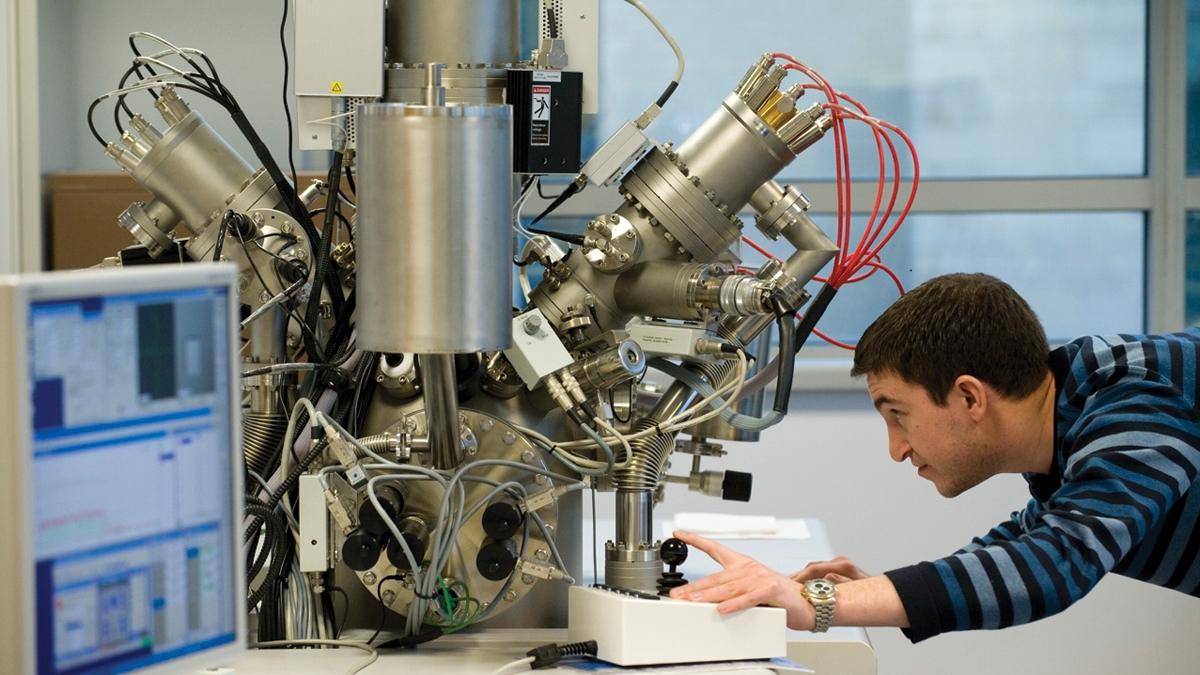
Time-of-Flight Secondary Ion Mass Spectrometry (ToF-SIMS) is an analytical method for the chemical characterization of solid surfaces. The technique provides information on the atomic and molecular composition of the outermost 1 – 3 monolayers of a sample with very high sensitivity (ppm to ppb detection limits). In addition to surface characterization, imaging and depth profiling analyses are also possible.
Table of Contents
How it Works
The Time-of-Flight Secondary Ion Mass Spectrometry ToF-SIMS uses a pulsed ion beam to bombard the sample surface. The primary ion energy is transferred to the target atoms via atomic collision cascades. As a result of the collision cascade, secondary ions, electrons, and neutrals are sputtered from the top 1 – 3 monolayers of the sample. The secondary ions are collected and accelerated into the flight tube and the mass of the secondary ions are determined by measuring the time at which they reach the detector. If the primary ion dose is kept low (i.e., the static limit), then the technique is suitable for the detection of organic molecules.
In ToF-SIMS, a complete mass spectrum is recorded for each pixel. Therefore, it is possible to reconstruct a mass-resolved intensity map showing the lateral distribution of the secondary ion.
ToF-SIMS depth profiling to identify the chemical composition as a function of depth into the sample. ToF-SIMS depth profiling uses two different ion beams: A so-called sputter beam (e.g., O2+, Cs+, or Arn+ gas cluster) is applied to erode the sample while a second analysis beam (e.g., Bix+) is used for chemical characterization of the crater bottom. By combining imaging and depth profiling, the 3D chemical composition of the sample can be visualized.
Sample Introduction and Preparation
Generally, samples are analyzed as-received. Suitable samples include solid surfaces, liquids (deposited onto a substrate), powders, fibers, and particles. If the sample preparation leaves behind a detectable but undesirable residue, it is possible to analyze the sample as-received and after a brief Arn+ gas cluster sputter cleaning step. Samples can also be cleaned with nitrogen gas to remove undesirable particulates.
It is also possible to place a small particulate sample on the indium foil which produces a conductive surface highlighting the particles for analysis. Areas as small as 0.2 μm can be analyzed; which is basically the size of the primary ion probe.
Fundamental Principles
ToF-SIMS uses a pulsed, focused particle beam to dislodge chemical species on the materials’ surface. The particles produced near the site of impact can be disassociated ions.
Secondary particles that are generated farther from impact sites are molecular compounds. These particles are, thus, accelerated into the flight path towards a detector. Since it is possible to measure the ToF of particles, you can produce mass resolutions as good as 0.00X atomic mass units.
Surface Sensitivity
The surface sensitivity of Time-of-Flight Secondary Ion Mass Spectrometry makes it perfect for solving surface-related problems and phenomena such as adhesion, corrosion, biocompatibility, surface segregation and blooming, etc. ToF-SIMS is survey technique and can provide an overview of what species are present on the sample. While complimentary to other techniques such as Auger and XPS, ToF-SIMS remains the best technique for the detection of elements and compounds present at low concentration.
Chemical Imaging
Analysis of ToF-SIMS is not limited to spectral characterization of chemical elements on the surface. Scanning the focused ion beam over the surface makes it possible to generate a chemical map that surfaces the distributions of compounds on the surface.
Imaging of bigger samples is accommodated by scanning specimen stage under primary ion beams. During imaging analysis, every ion generated in every pixel gets collected by the spectrometer and stored in the data file, enabling you to display a distribution map for every compound and element detected on samples.
Applications
Applications of ToF-SIMS include:
- Chemical characterization of the surfaces
- Identification of polymer additives
- Identification of particles
- Monitoring surface modifications
- Depth profiling: identifying composition as a function of depth
- Imaging: identification of lateral distribution of elements and molecular species
- Secondary electron images without sample coating
Concluding Remarks!
While ToF-SIMS interpretation is generally more difficult than XPS, the use of databases and references aid in the interpretation of the mass spectra. Furthermore, ToF-SIMS is often used in conjunction with XPS to provide a more complete characterization of the sample surface.